A comprehensive guide to in-app messages that boost user engagement and revenue
In-app messaging has emerged to be the perfect mobile messaging channel. They are undoubtedly effective but they’ve always been perceived as the second kick to push notification. This is because there hasn’t been any significant change to in-app messages. It has been about the same, mundane templates that did not deliver seamless user experience, until today.
At Insider, we have brought all our learnings from personalizing experiences to hundreds of consumers both on mobile and web to in-app messaging. We have begun a movement of redefining in-app messaging to in-app engagement.
Updated on Jun 29, 2020
What is In-App Messaging?
An in-app message is a message that is delivered to your app users directly when they are using your app. In-app messages are quite different from push notifications in terms of appearance and usage. Push notifications show up on the home screen of a smartphone while in-app appears inside of an app. Users must opt-in to push notifications, but there’s no such requirement for in-app messaging.
In-app messages have a significant impact across the lifecycle stages. In-app messaging can influence a users’ decision to stay around or not. It’s important that marketers carefully craft in-app messages that streamline the app experience and direct users on how to gain value from the app.

Activation
Your growth curve should not take a halt at app installs. The promised land for app marketers lies after the user is activated. User activation is all about educating the users about your app, showing the benefits they’ll receive by using your app, and encouraging them to come back. Helping your new users reach their first aha! moment and find success with your mobile app early on has a huge domino effect.
The mobile app shelf life is shorter than you think. Did you know that the average app loses almost 77% of their active users within the first 3 days of app install? According to Statista, 21% of mobile apps have been used only once within the first six months of app installs.
This is where the First-Time User Experience (FTUE) comes into the picture. Most mobile marketers often misunderstand the concept of FTUE. First-time user experience is a user’s first impression of your app. It plays a prominent role in increasing mobile app user adoption, encouraging repeated app launches, and increasing session durations.
If your FTUE is too complex or not user-friendly then users will most likely leave your app. In order to retain users after the first week, you need to ask your users what they need from the app so you can successfully deliver. Onboarding is the key to achieving a great FTUE for your users and also showing them the value of using your app. Onboarding is all about getting your new users to understand and engage with your app and make them use your app regularly until it becomes a habit.
While most mobile apps make user onboarding a part of their user interface, there are times when the user skips through the onboarding. For times like that, there are no ways to onboard the user at a later time. This is where in-app messages come into the picture. You can use in-app messages to be a part of the user onboarding process and show your users the value they’ll receive by using your app and guide them to ace their first aha! moment.
Messages that are rich, intuitive, and delightful, keep your users engaged right from the first app onboarding experience to the time they are on your app. In fact, a well-crafted in-app message can turn even the mundane actions into great experiences.
Types of in-app messaging campaigns to level-up your user onboarding game:
1.Welcome Messages – Make your first impression count with a stellar welcome in-app message. Welcome messages are the perfect way to arrest a user’s attention and leave a positive first impression. They lay a foundation for a long-lasting relationship by creating users’ first aha! moment within your app.
The goal is to establish an immediate personal connection with first-time users.
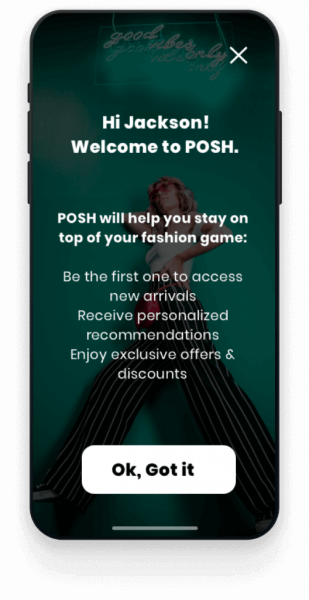
2. Highlighting Power Features – This is a definite part of the app user onboarding process apps boast a wide range of features that is impossible for a new user to be aware of. You cannot take the passenger seat and expect your users to start using these features from day one.
With in-app messages, you can show your new users the key power features of your app and help them more value out of your app.
The goal is to get your new app users to use these powerful features and achieve the most with your app.
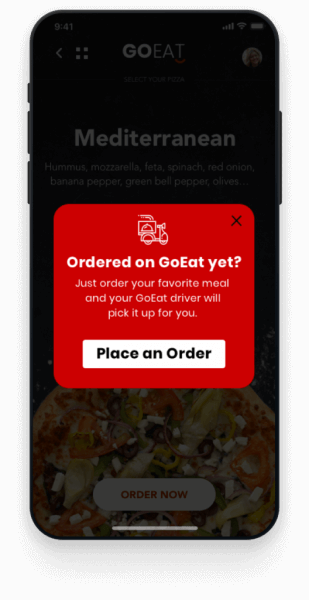
3. First Time Conversions – While onboarding and welcoming new users is important, it is even more important to nudge them towards making their first conversion.
Nudging your new app users with an in-app message to offer a referral code, coupon, discount, and a first-time offer goes a long way and activates the users to make their first move towards conversion.
The goal with this type of in-app message is to maximize the chances of converting a new user into a paying customer.
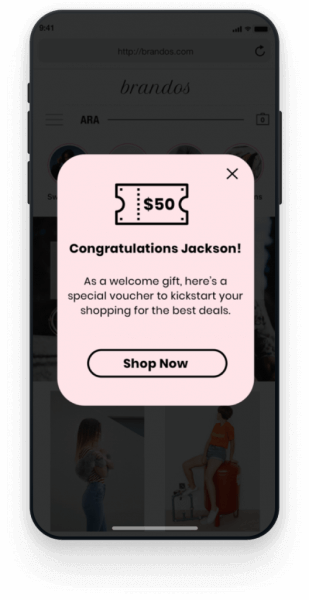
Engagement
Engaging your users consistently improves your app engagement metrics. Having unpredictability in engagement is not good for your mobile app business and it makes it even harder for you as a marketer to predictably run high impact campaigns. Most user drop-offs for mobile apps happen within the first 7 days. Engagement is the key to retain and convert your users. Continuous user engagement leads to building micro habits within your app. This makes your users keep coming back. Better user engagement leads to:
- Increase in retention
- Increase in CLV
- A higher net promoter score (NPS)
When your engagement efforts lead to a message or a coupon based on an action performed by the user, the experience can be made a magical one. But the power for rendering such experiences lies in the availability of data at the moment they occur.
In-app Messages have proven to be a great way to engage with your users while they are in the app. When in-app messages are personalized and triggered at the right time, they can often feel like a part of the app experience. Here’s how you can redefine your in-app user engagement:
Lead Generation – If you are a mobile-first business then there is a high chance that you are heavily dependent on just one or two channels. However, in the era of omnichannel engagement, it is imperative that you have multiple touchpoints to engage and communicate with your users. Lead generation is not easy and getting your users’ email id is even harder. The email has been at the forefront of customer engagement for years and will continue to be so. For you to engage your users outside the mobile app you’ll need their other contact information for email, WhatsApp among other channels.
Here are the different kinds of in-app messages you can send to increase your lead generation:
- Send an in-app message to a returning user segment whose discount affinity is high and gamify the lead collection experiences by incentivizing them with surprise discounts and special offers.
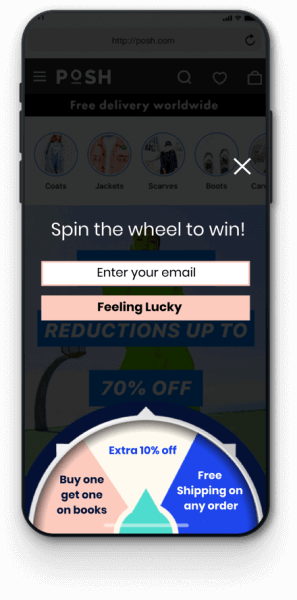
2. Send an in-app message to a frequent user segment whose average purchase is more than once in a month. And engage your users on the channel they are most active on.
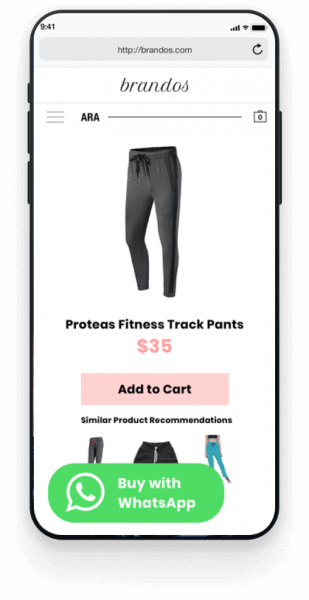
Deep Linking – Consider in-app messages as a means to redirect your users with relevant and compelling CTAs that contain appropriate links that send them to the desired destination within your mobile app. This enables you to use personalization as a tool to drive to-the-point and desired user action.
The goal is to improve user engagement within the app and nudge users to make a specific action with deep linking.
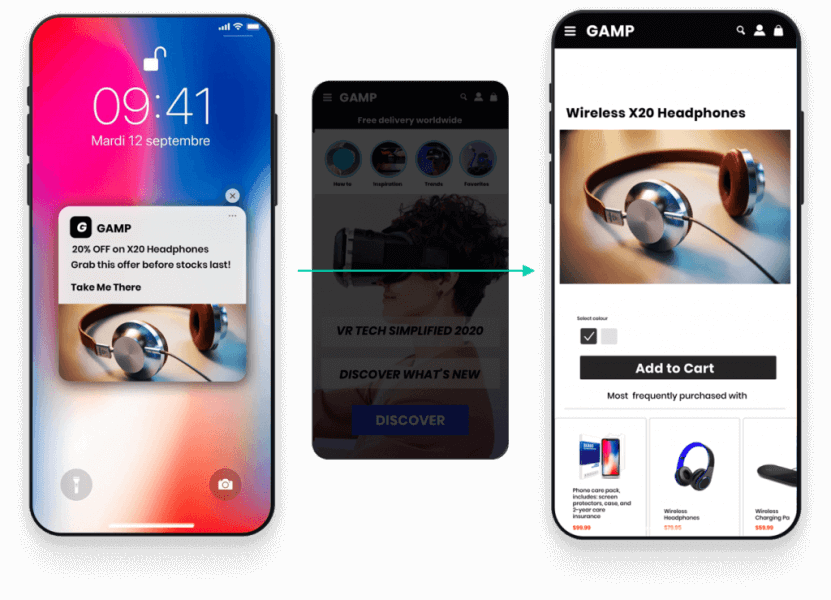
In order to bring more power to your in-app engagement, use predictive segmentation to build a segment that is more likely to engage with your app, and increase chances of purchase
You can send an in-app message to high CLV users to increase your user engagement and boost average order value.
You can also send an in-app message to low CLV users to address high paying customers. This helps with increasing your average order value and boosting revenue.
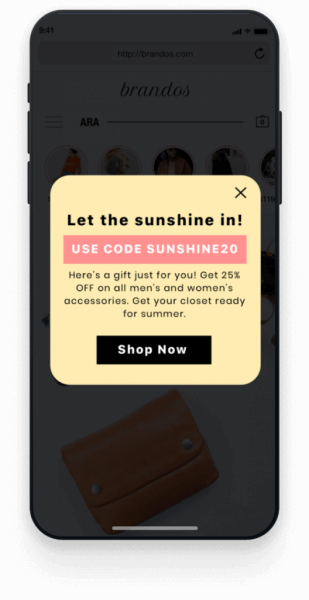
Revenue
Now that we’ve established the fact that in-app messages play a vital role in user onboarding and user engagement, let’s explore how in-app messages can improve your in-app conversions and boost your revenue.
Mobile app conversion is one of the golden marketing metrics that is measured across most channels. Mobile app conversions go far beyond downloads and installs. In fact, the real conversions happen in-app, when an engaged user converts with a specific action towards a specific goal.
Mobile app conversion rates will continue to be a focus for marketers to drive more revenue from their apps. Here’s how effectively you can use in-app messaging to boost your revenues and sky-rocket your conversion rates.
Purchase Triggers – In-app purchases are the most effective and direct realizations to revenue. However, not all users make a purchase on your app. One way to drive more purchases is by personalizing promotions according to individual user behavior. Hence, every user needs some amount of push to take action (Purchase). This is where purchase triggers come into action. Purchase triggers are subtle nudges to the user to make an action based on their current and previous behavior within your app. These triggers are well known in the context of email, SMS, and push notifications.
Here are the different kinds of in-app messages you can send to increase in-app revenues:
- Send an in-app message to convince hesitant shoppers who have viewed a product more than once. Show how many users are interested in the same product to create urgency and provide a sense of social approval to speed up purchasing decisions.
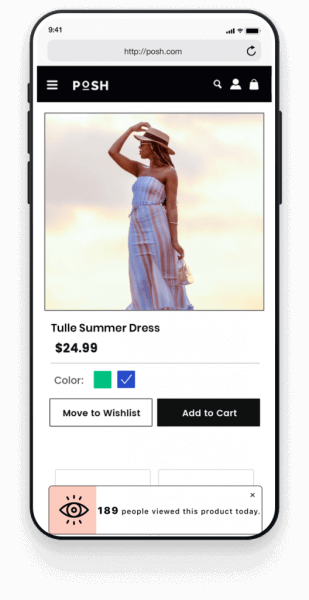
2. Send an in-app message to discount shoppers whose discount affinity is high. Set up in-app countdown timers in seconds to create a sense of urgency, speed up conversions, and highlight limited-time offers and special promotions.
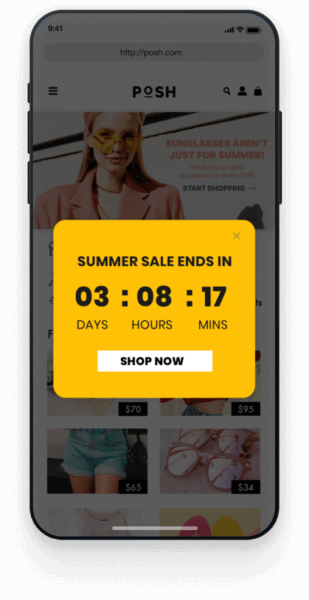
3. Send an in-app message to your returning shoppers with a scratch coupon code to gamify your users’ app experience. Encourage them to use the code and ensure purchasing decisions.
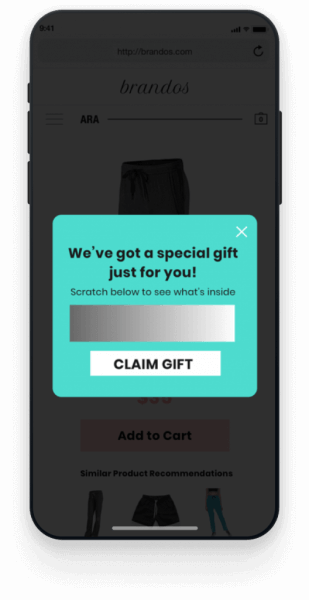
The goal is to create a sense of urgency among the users and encourage them to make a faster purchasing decision.
Converting Free Users to Paying Customers – Most businesses follow the “free-app” model as a part of the user acquisition strategy. Users are not charged at the time of download but are allowed to make in-app purchases.
You can send an in-app message to the free app users segment in order to upsell a premium feature on your app and help them to convert.
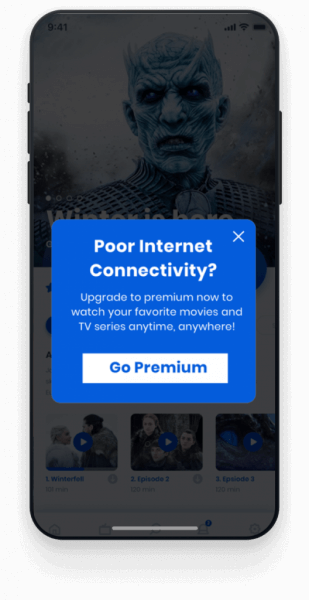
Retention
Let’s admit the fact that retention is the foundation of growth. Today, user retention is a critical way of driving the growth of companies on every scale. In fact, a 5% increase in customer retention leads up to a 75% increase in profits, as per Bain & Company. While the mobile-first businesses primarily focus on user acquisition, they end up with unusually high churns and even higher acquisition costs to get more new users. This is why they need to have a fine balance between user acquisition and retention.
Effective user retention means you’ve achieved a great product/market fit. It means greater customer lifetime value (CLV). It also means higher average order values (AOVs), increased monthly recurring revenue (MRR), and lower customer acquisition costs (CACs).
While user acquisition is important, here are the reasons why user retention is far more important:
- Retention helps you strengthen your acquisition strategies. Knowing your most loyal users and the channels they’ve come from helps you allocate more time and resources to attract similar users.
- User retention increases your revenue. The longer users stay, the more they spend on your product and open multiple aspects of increasing revenue.
- Retention boosts your app growth. Since retaining users helps in achieving a predictable revenue, it opens up the potential to reinvest in growing your business and scale it faster.
Improving user retention is the single most powerful competitive advantage you can achieve. In fact, brands that focus on retention are more likely to increase their market share than those who prioritize acquisition. Here are a few strategies you can implement to increase your mobile app user retention in the long run by using in-app messages.
Delivering New Features/App Updates – Users abandon an app and uninstall it for various reasons. One of the prominent reasons is the lack of awareness of the new updates. In-app messages can be used as the best channel to nudge users to explore new app/feature updates, new product additions. This not only improves user engagement but also helps retain users.
Whenever there’s a new update in the app, trigger an in-app message containing the updates and add a CTA to encourage users to explore the new features.
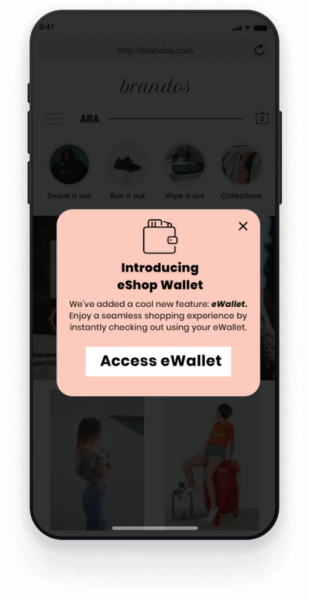
Improving User Engagement – As mobile app marketers, you already know that growth and retention are the true north star metrics. However, one cannot neglect user engagement which plays a vital role in complementing and improving your user retention. While you are engaging users and grabbing their attention, your competitors are lurking around and waiting for that one golden opportunity to get your users’ attention towards their app. One bad experience and you lose your valuable user. In order to engage your users better, you need to first understand what they like about your product and how you can personalize their user experience.
Here are the different kinds of in-app messages you can send to improve your user engagement and user retention:
- Send an in-app message to returning visitors who have achieved a specific threshold of total order value to collect their feedback on how they felt about your product/service.
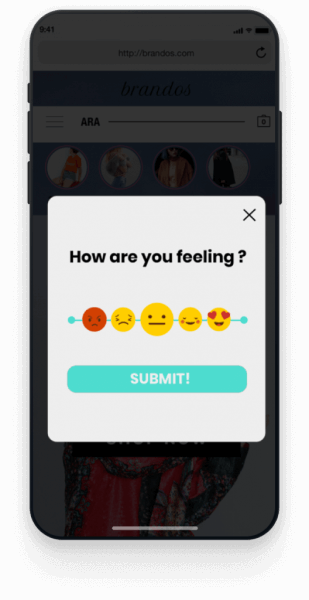
2. Send an in-app message to conduct a detailed survey to understand your most loyal users and frequent shoppers better. Understand what they like or what they don’t like.
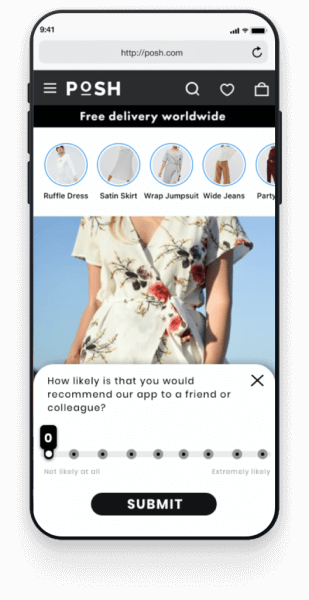
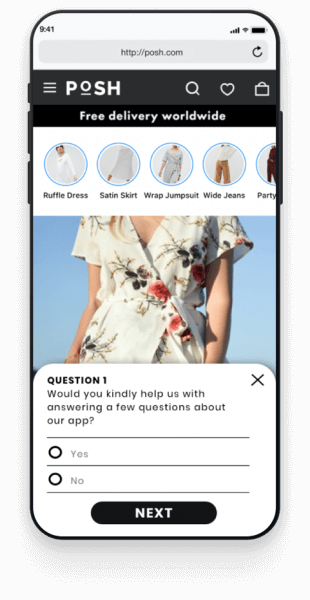
Taking a step back, and working on the feedback helps you deliver a better app user experience and long term user retention.
However, there are users of different app behaviors who are likely to churn. And it may be too late to try to retain them. In such cases, predictive segmentation plays a vital role. You can build predictive segments for those who are most likely to uninstall your app. This helps you create a retention strategy for this segment beforehand.
Send this segment an in-app message with offers and discounts to engage them with your app and encourage them towards conversion and help long term user retention.
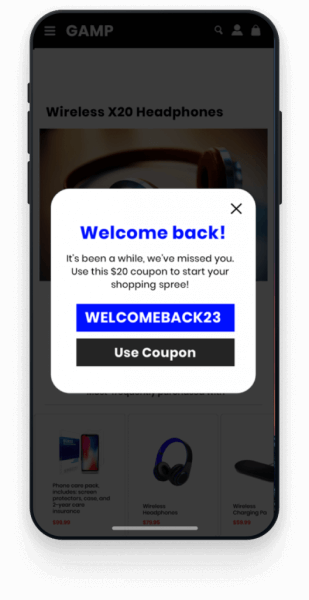
In-App Messages Moving Forward
In-app messaging is a great engagement channel to add to your marketing arsenal. When used in the right way and in the right context, you can increase user engagement and reduce user abandonment. In-app messages not only engage your users within the app but also offer unique value. A thoughtful and holistic approach to your in-app campaigns will have more engaged users and achieve a higher ROI.
For best results, you must keep these best practices in mind:
- Segment your app user base to maximize effectiveness
- Onboard your first-time users with the most important details and value of the app
- Make sure that your messages do not hinder the overall experience
Interested in knowing more about how you can leverage our template store to level-up your in-app messaging game? Discover our mobile in-app templates here or schedule a demo today to see its capabilities live.



















